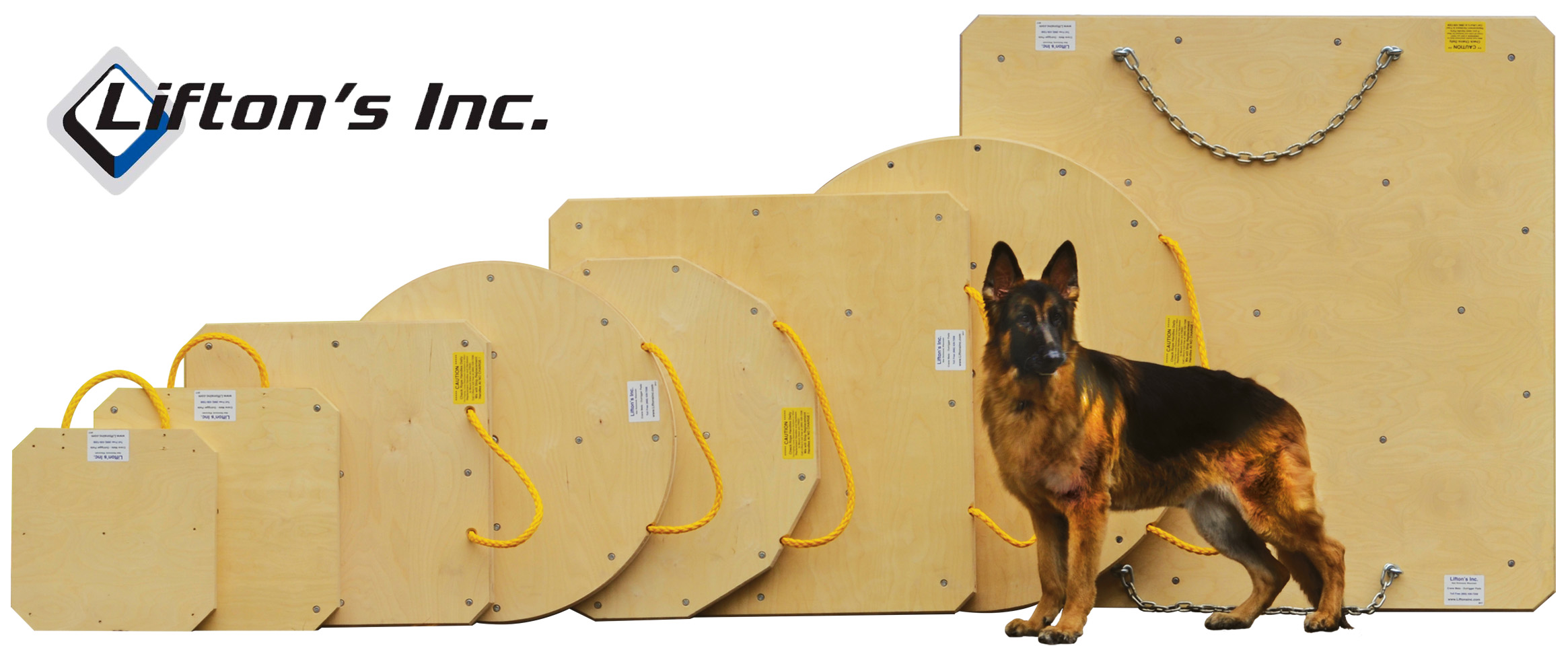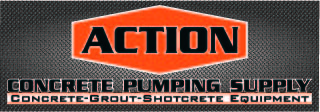Knowing Your Equipment: Hydraulic Pumps
As we know, concrete pumps are a maze of hydraulic technology. There are many separate components that all must function properly in order to do the simple task of a piston moving and pushing concrete through a pipe. Hydraulics are actually pretty easy if you take a few minutes to understand what is happening here.
The basic system is comprised of a pump to move the fluid, a motor or cylinder that does the work, a reservoir to store fluid and a power source that drives the pump. The magic is in the control devices that direct the pump, the cylinder, the tank, and the motor to do what is needed at the appropriate time. Lets look at pumps first.
There are several types of hydraulic pump that we may see in our machines. Usually they are either gear type or axial piston pumps, the later being the most common in concrete pumps. A gear pump is exactly what it sounds like, a set of gears that mesh in a housing with passages and ports to direct the fluid under the pressure created by the turning gears that capture and expel the fluid under pressure. These pumps are not usually found in a place where hi-volume is required, as they are better at producing hi-pressure. Gear pumps are also pretty dependable and have a long service life.
Axial piston pumps are more adept at higher volume applications because of the design that has several pistons much like an engine, except these pistons operate in a very different way, with out the use of a crank-shaft. How is this possible? Rotation. A carrier assembly, commonly called the “barrels” rotates under power from an external power source through a shaft. The barrels may have 6 or more holes much like the revolving barrel of a six-shooter handgun. In each hole is a piston, usually made of brass or a similar soft metal. Each piston has a connecting rod that hangs from the back and extends out of the barrel. All of the rods are then positioned against a round plate that has similar dimensions as the barrel. This plate is able to shift position like the butterfly in a carburetor. When it does so, a rod will be drawn out or back in the barrel as the rods on the opposite side are pushed in. these pistons push fluid as they travel back and forth in the barrels. The whole assembly rotates with the plate flopping back and forth pushing and pulling pistons in and out of the barrel as it spins. The entire assembly is called “the rotary group”. 6 pistons the size of a quarter in a barrel rotating at hi-R.P.M. can move a tremendous amount of oil at extremely hi-pressure. The two things that effect the out put of this type pump are plate position and engine R.P.M. these pumps are more likely to be found in today's concrete pump because of their ability to move large quantities of fluid under pressure. They are not as durable as gear pumps, and can be easily damaged because of the amount of internal contact area requiring constant lubrication. This larger metal to metal contact area is also why we can get more volume out of these pumps. These pumps are precision built and will provide long service life if maintained and not over sped. They, as anything that rotates can and will come apart if run above the recommended R.P.M. for any period of time. The easiest way to destroy one of these is to over-speed the pump. Another way is to cavitate the pump. Cavitation is air being circulated in the hydraulic system and circulated by the pump. Hydraulics work because you cannot compress fluid. Apply pressure to fluid and it will move, every time. Contain it and you have a source of power. Air is different. It will compress. When trapped in a system and circulated into an axial piston pump, it will compress and compress more and more being trapped in the pump body. As air is compressed in this way under the pressures in a pump, it is like steel shot beating hell out of the delicate metals in the pump. Remember these things are made of brass. This is because of the need to expand and contract and still maintain a constant seal. When these air bubbles are bouncing around they will do a lot of damage in seconds. The lack of lubrication for just a second will also do its damage to the mating surfaces. Cavitation is real obvious, when you hear it, its probably too late and the damage has been done, but not always. It sounds like a screech or a scream from the pump. That sound is the pump dying!
Never under any circumstances run a hyd pump low on oil. The hyd oil is the same as the blood in your body and every bit as important. It also must be in good condition, meaning clean and the proper viscosity for the operating climate. In an emergency, whatever you have is better than running on empty or sucking air into the pumps. I have seen guys put water or motor oil in the tank in an emergency after loosing all their hyd oil from a blown line or fitting. This is better than running it dry, but not much. Water will not lubricate the delicate moving parts and will do damage if run for very long. Hyd oil is formulated to work with the metals in the pump. It has acids and other additives for wear resistance and to maintain a stable viscosity. In fact, hyd oil is water-soluble meaning it will mix with water. Ever seen milky hyd oil in a tank? Its water mixed in with the oil. It may never separate on its own like common oil would. That’s why we drain the tank DAILY to remove the water inside that has appeared from condensation from a hot tank that cools off in the evening when parked. The water that appears from condensation will not mix with your oil in the tank unless it is of sufficient quantity to make it through the pumps. Notice that most hyd oil suction lines are installed a little above the bottom of the tank for this very reason. Some systems run suction directly to the pumps, others have filtration between the tank and the pump. If yours is not filtered on suction, it will be on the return side where the oil is cleaned before it returns to the tank.
Filtration is also very important in a hyd system. As the pumps work they wear. The wear is so little so slowly in a well maintained system that it takes years for significant wear to become obvious. Never the less it is happening all the time. Contamination from outside sources is probably the biggest reason to filter constantly. Remember what your machine is doing. Operating a delicate hydraulic system in sand and gravel with dust and water always present. The very things that are fatal to hydraulics! The filters save your pump every time you put it in PTO. Check them according to the manufacturer schedule.
As of late, we are seeing a new generation of axial piston pumps. We have had the “banana” pump for some time; it is a fixed displacement pump, which is what we need for a boom pump having flow at any speed. A main pump, larger, is most likely a ‘variable displacement” pump. This means that it's out put can be changed by engine RPM or the angle of the swash plate which controls how much travel the pistons have. These will generally be at or near a neutral position at idle and will produce flow at any increase in speed. Here is where we will see a few different styles of main pump. The standard single phase or single discharge port has been around forever simply providing flow to a control block that then directs the oil to the correct servo. Now we have multi port pumps which actually oscillate between different ports sending oil in one direction then another without the aid of a control block assembly. It is almost the same thing except the multi port pump does all the work and there is less change over time in the pump cycle. The control block is eliminated and the only other thing required is a small control valve that helps signal the pump to pressure either “a” port or “b” port. This smaller valve is much faster and easier to move than the 2lb spool required on the single port pump. Both have some advantages and disadvantages, rendering the difference purely a matter of personal preference.
Now that we have a basic understanding of how a hyd pump works, we can now learn how to control it.
The pump is turning, pushing oil somewhere. How does it know to push oil? This is the job of a relief valve and/or solenoid, or off/on valve. This devise, usually electrically activated opens or closes allowing oil to flow under pressure to the servo, motor or cylinder or, simply flow in a circle back to tank where it will make a continuous loop until a different signal is received. This is what happens when your concrete pump is in neutral, the pump is still turning and working, just not sending oil to anything except the tank. When you put the pump in forward you are blocking the easy passage to tank and sending the oil to the cylinder, which will now move. The basic idea is that liquid cannot be compressed, so when it is contained and has sufficient force or pressure, it can and will move whatever it is directed at. When contained and under pressure, fluid acts as a solid transmitting the energy of pressure to a working part. Now, what keeps the pump from blowing up if it cannot move whatever it was sent to do? A relief valve does this. It is a spring-loaded valve like a regulator that will block a passage to tank until a set pressure is reached. At this point it will open and allow the oil to go to tank instead of self-destructing. Ever had a plug in a concrete pump and heard that screaming? That’s the relief valve opening under hi-pressure. Sometimes called a safety valve, it has a hard life handling a hi-volume of oil at an extremely hi-pressure. Avoid working this part too much. If it fails to operate, life can get tough in between heartbeats while your main pumps explode. While there are many different system designs from different manufacturers, the basic hyd system is the same, a pump, working parts and it’s control systems. Knowing how it works will help you in your daily activities knowing that when your concrete pump fails to do anything when you switch to forward pump, you now know what must happen for it to work, therefore you have the ability to find what is not right, possibly the off/on solenoid or fuse, or a stuck valve. You know where to look.
Now that we can turn it on and off, we can now see how to direct the oil to all the working parts, cylinders, agitator motors, concrete valve etc. there are going to be several hyd pumps in a concrete boom pump. Each has a task and will operate independently of the others. Some all feed from a common tank, some have two tanks and separate systems for the boom and the concrete pump. Learn the machine that you are running and discover what kind of system that you have. As the pumps are pushing oil to the drive cylinder, you know what will happen next, it will cycle, change direction as the concrete valve shifts and the drive cylinders change direction. Signal ports at various places in the working cylinder accomplish this. As the piston in the hyd cylinder reaches the end of its stroke, it passes a port allowing oil to flow to the control block or valve and “signal” the control to move a valve or spool which then directs oil in the opposite direction. As the second stroke or cycle completes, the same thing happens again, thus you have automatic cycling. Pretty simple so far! This is how the concrete valve knows when to move and when the drive cylinders know to change direction. Putting your concrete pump in reverse is simply moving a spool or control valve to an out of phase position. This will throw the cycle 180 degrees out, and everything will continue as normal until the reverse switch is released and normal cycling phase is re-established.
Some manufacturers are now using electrical sensors to send the signal to a solenoid that will send a spool over thus changing the cycle. This system is a bit quicker than a basic hyd control, but it has more parts and is more complex. You should be familiar with the type of system on your particular pump and know where the sensors are and where the solenoids are which always have some kind of manual control in case of electrical failure. Even if you loose all electrical in the pump with no hope of restoring power as described in the previous article on electrical problems, you can still cycle the pump to finish the pour at least until help arrives. You can fold the boom or even pour walls depending on how well you can handle the manual controls. I would suggest everyone practice this emergency procedure so that you can be prepared if/when it happens.
Having so many different designs in so many different manufactures, it is hard to describe the hyd system of them all with out looking at each make and model. So, we will keep this as generic as possible. Now that we understand how the pump cycles and how we get reverse pump, lets look at the accessories and their drives. Besides the mains, which power the concrete pump, there will be a boom pump, maybe an accumulator pump, and perhaps an accessory pump. The banana shape can usually identify the boom pump. It will have a slight bend in the body. This is to keep the rotary group at some flow all the time. This allows you to have flow at idle and up allowing the boom to move at any speed. The boom circuit works in a similar way as the pump circuit except that its many cylinders are all different in what they require and how much. The swing for example will most likely be independent of the rest of the boom circuit because it is more closely regulated and also may have to operate a brake. The swing will have its own pressure relief and a safety setting. This limits the load that the swing motor or cylinders will handle. If your pump is too far out of level and will not swing up hill, it is designed that way so the turret gear and swing assembly will not be damaged by excessive torque. Too much power to the swing and it would twist it self-apart. It does run off the same pump and same general circuit, but it is separate in the pressure and relief system. The other boom cylinders are all metered too. Each will have holding valves with safety settings so that the boom will lift only so much weight. These are not cranes; we do not lift 50’ trimmie pipes because they were not designed to do this. They are designed to lift their own weight and THAT IS ALL! The holding/safety valves limit what we can do for our own good. There may be orifices in the line somewhere to limit the speed of the boom cylinder. Some of these are adjustable and should be set according to factory specs. Even with the proportional booms we have now, they have built in safety limits. They are designed to be gentle and graceful not flyswatters. In any boom hyd system you will find a main relief that will limit pressure to the entire system. Know where this is. On occasion these may fail or stick not giving you any pressure to move your boom with. If this ever happens, sometimes a simple tap on the relief will free it. Don’t beat on it, tap it. Some reliefs have an adjustment screw in them. These must only be adjusted when a gauge is present or you can over pressurize the system and start blowing hoses apart one after another. The boom pump as small as it is, will supply enough pressure to blow apart almost anything. These pumps are not designed to move massive amounts of oil as the mains are, they are designed to move sufficient oil under high pressure to operate the heavy load of a boom cylinder. Always check the hoses on the boom circuit, as they tend to jump around more due to the off/on nature of the boom system. Look for rubbed spots in the rubber liner on these and all hydraulic hoses. Wrap them in a piece of heavy-duty water hose and tie-strap the water hose in the area where it will protect the hyd hose. Always check the hoses in the turret of the boom. There are lots of places where a hose can rub through or hang in there, and ALWAYS know which way the boom was folded. There are few things worse than opening the boom the wrong way and twisting off a couple hoses inside. The boom circuit will also have the manual controls necessary in case of a power failure. Learn these controls. When you have several loads sitting there and must continue pumping, that is not the time to be learning. You should be able to feel the levers without looking too often and drive the boom fairly well. The lay out is different on every model, so learn yours. The pump parked next to yours too. You never know. Some models have a completely separate hyd tank and filtration system for the boom. Some operate everything from one tank. All will have different filters for the boom and the other systems. Check these according to the factory timetable for the number of hours of operation. Many filtration systems have a by-pass so that if the filter is clogged, oil will continue to circulate. You may never know that you are running unfiltered oil until a hyd pump fails from contamination or relief valves start sticking from the tiniest bit of debris. Filters are cheap compared to buying new pumps!
Charge pumps. These little pumps are found on some models to provide “charge oil” to the control circuit of the concrete pump. The mains are controlled by a lower pressure control system for the control valves that direct the mains. The little charge pumps supply this low pressure for control purposes, but are as important as any on the machine. With out the charge pump, you would not be able to turn the concrete pump on because they are “in” charge of the main pump control system. You send the charge pump a signal; it sends the main pump a signal. A very important link in the chain.
Accessory pumps do exactly what they sound like. They are low volume pumps that simply supply oil pressure to turn the agitator and water pump. Some are used in conjunction with the concrete pump circuit to supply low pressure from return to operate control valves. Some are the source of cooling as they circulate oil at a lower pressure and do so constantly while turning some agitators. Again, every system is different so know yours. A few things that all systems have in common are control valves, relief valves, suction and pressure lines, and filtration. Take the time to visually inspect and follow the lines from the pump to the control to the actual working part. This will help you is case anything ever fails because you will know where all the components are. The systems that are in production today are extremely complicated and no body expects you to know everything about them, but you are expected to know where the basic components are and what they do so that when something does go wrong, you can communicate with a mechanic and get the problem resolved. When there is mud on the job and you are down, that is not the time for searching for a part. Know where it is and what it does.
Accumulator pumps: these are pumps that simply charge an accumulator that is used for dampening or for pre-tension on a system, usually the concrete valve. Because the concrete valve requires hi pressure to move and is under a heavy load and must do it with out hesitation, the hyd pumps will take too long to supply enough pressure to do this, making the valve slow and late in shifting. The accumulator is a nitrogen filled balloon that always has the required pressure available when the signal to shift is sent. It gives the hyd system a boost to make the valve move now, not in a second or two. The accumulator pump re-charges the balloon in the time it takes the drive cylinder to complete another stroke being ready again to shift the valve when the signal arrives. The accumulator maintains pressure on the system for instant movement. Some are used as shock absorbers to take the spike out of a system when a spool moves sending oil in a different direction keeping a move consistent level of pressure instead of high's and lows in the system while the main hyd pumps “catch up” to the demand.
Here are a few more things that will be in your hyd system. Know them and where they are.
Check valve. Allows flow in only one direction
Shut off valve. Found in the concrete pump circuit to block flow to a cylinder
Main pressure relief. On or near the “brain” or control block of any system to limit the maximum oil pressure to the working parts.
Boom safety valve with lever (Schwing) some models are so equipped with this to operate the boom in case of electrical failure. These models are normally running zero pressure until a command or signal is sent to a function. Turning the safety valve builds pressure thus permitting boom operation.
Control valves and spools. On every system for each function. Some electrically controlled some by oil pressure. Some spring loaded, oil or solenoid drives others.
Shuttle valve. A “t” type of valve similar to a check valve except it will permit flow in two different directions. It will have three ports. It is a three-passage block with a ball inside that will block one of the three ports depending on which port is supplying the pressure. Sometimes found in control devices that may operate in two directions such as the hyd operated engine throttle.
Throttle valves. These are simply screw type valves that have a knob or handle that you turn to increase or decrease the flow of oil. They are used for fine adjustment of oil flow.
With ever increasing complexity in the newer hyd systems that we are seeing today, a good basic understanding of how a particular system works is required in order to trouble shoot a downed concrete pump on the job. It may be difficult to tell whether the problem is electric or hydraulic when something fails to function. Having this understanding will help you in making that determination and help with the diagnosis and repair while on site. Almost any system failure can be dealt with if you know where to look and what to look for. You agitator does not come on. Is it getting pressure or is it not receiving the electrical signal to activate the solenoid that permits the flow of oil? The pump will not reverse. Is the spool stuck or the relief stuck or is the wire to the solenoid broken? A boom function will not work. Is it getting the signal from the remote to the stack valves or is there a problem in the boom relief valve? These are the types of questions that you should be able to answer should any of these and countless other potential problems arise during a pour. They rarely appear in the yard where tools and mechanics are available. If you are uncertain as to the function of any of the components or location of any of these parts, get with a mechanic or manager and have them point them out to you. Get someone that is knowledgeable about your machine and learn how to do everything manually and where to look for the things mentioned above. It is for your own benefit and the benefit of the company that you work for and the contractor that has trusted in your ability to pump his concrete. Know what you are doing, and be a pro.
Written By Horton, Lee Published by ConcretePumping.com











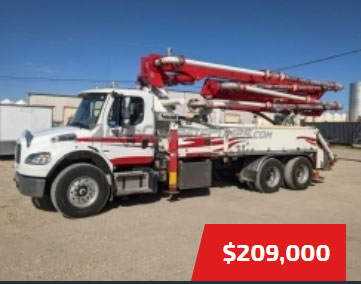


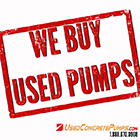

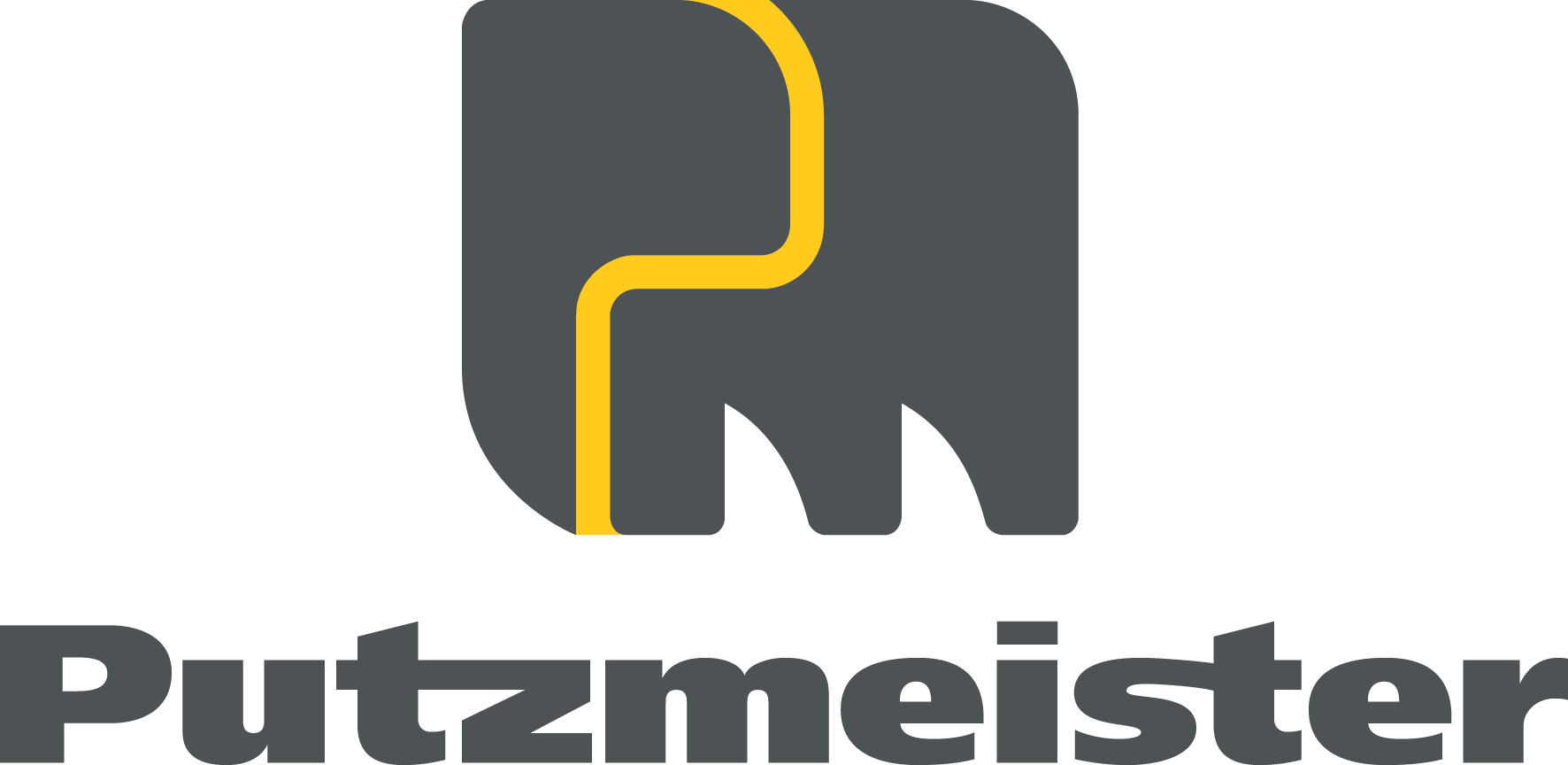



.jpg)
.gif)

.jpg)

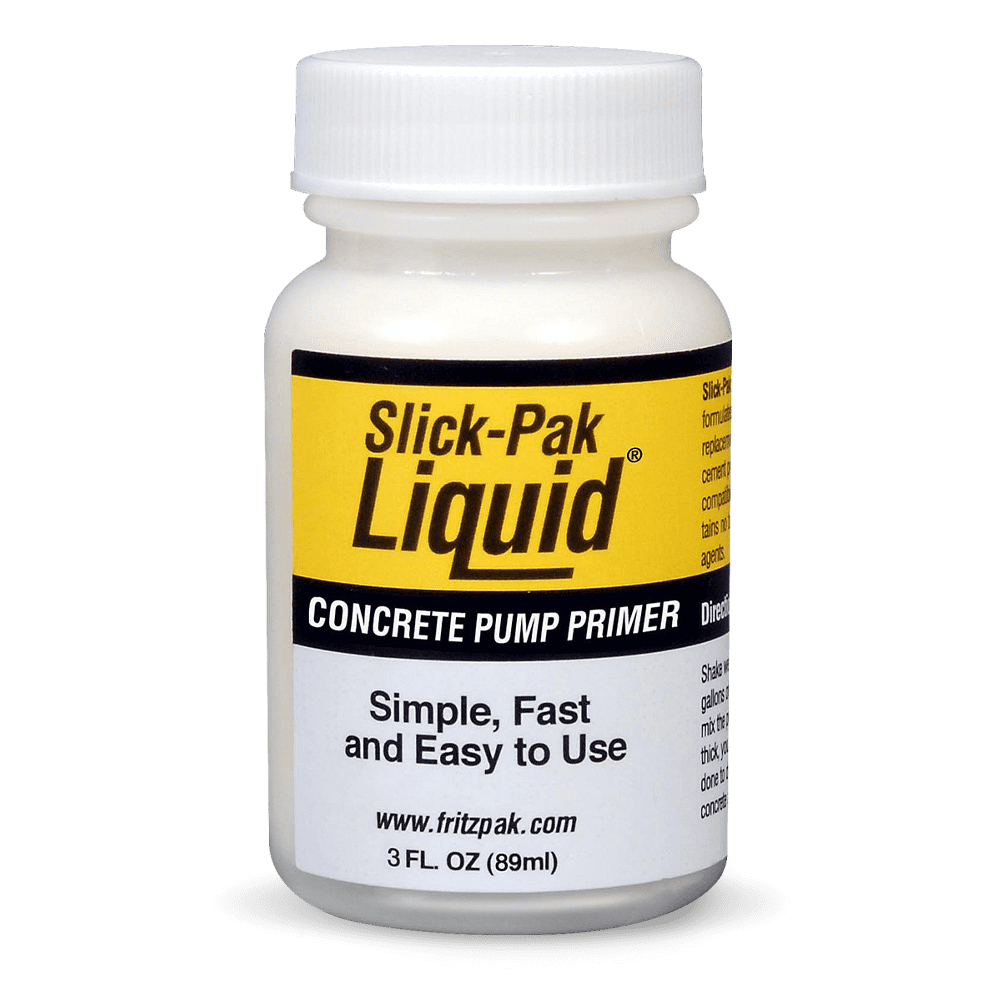






.jpg)
